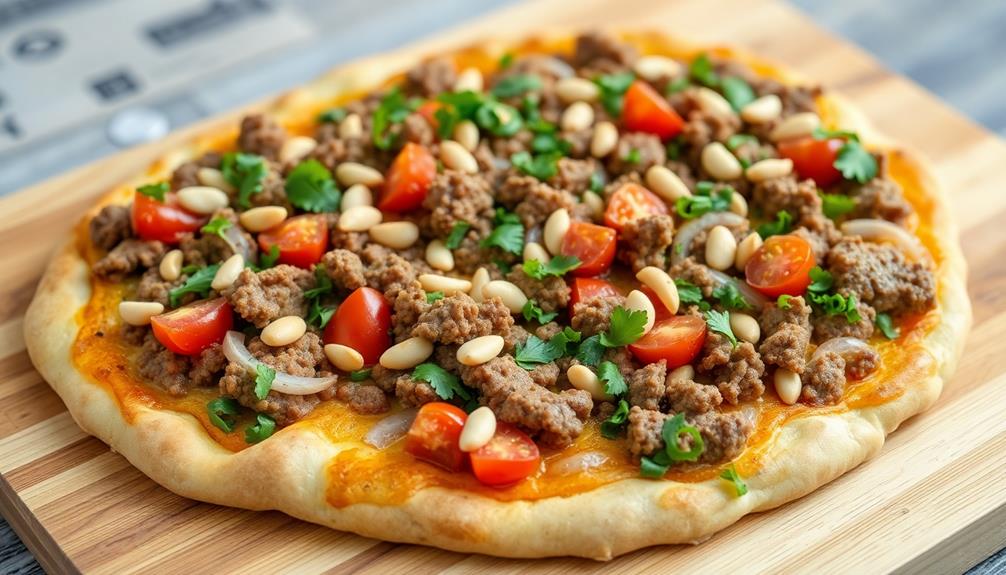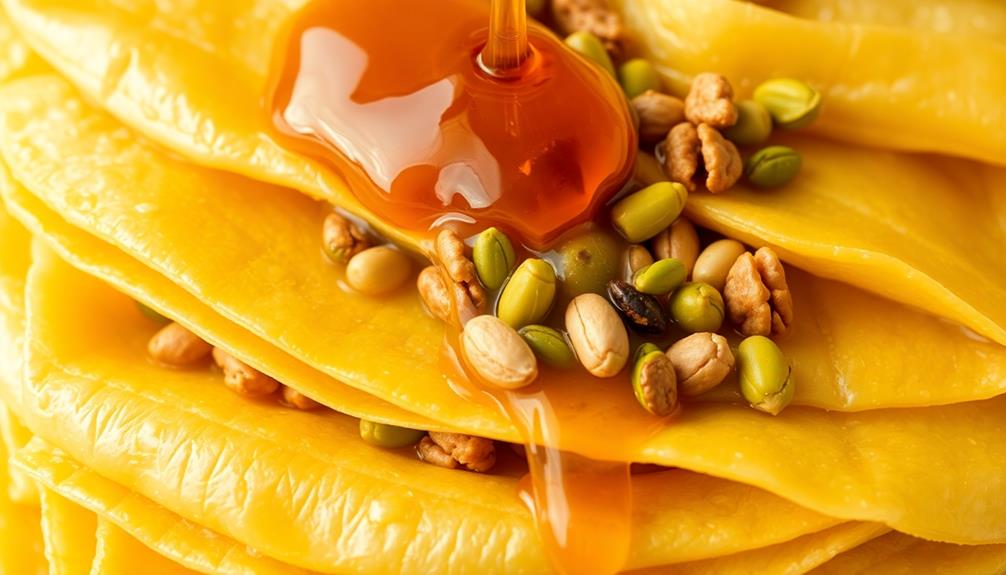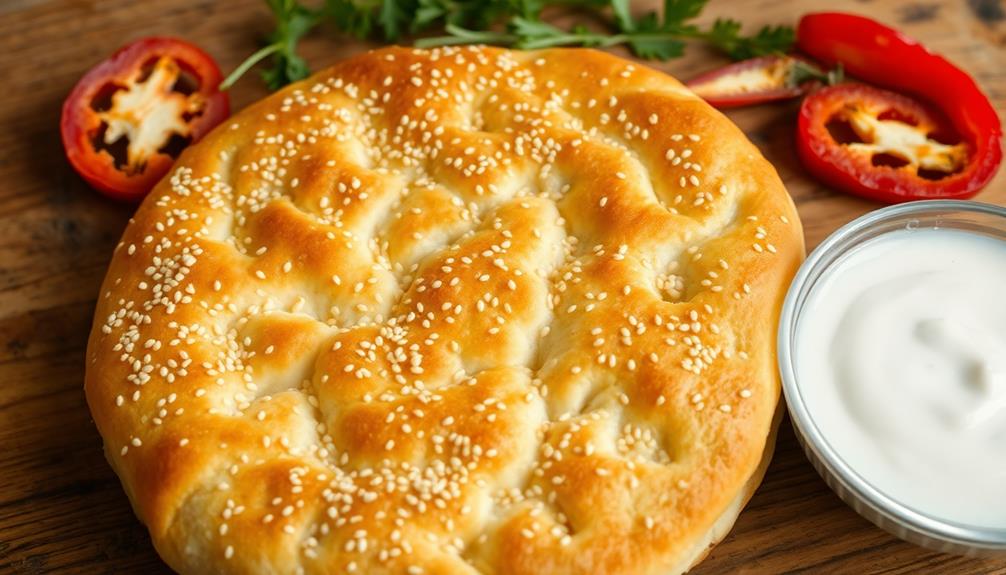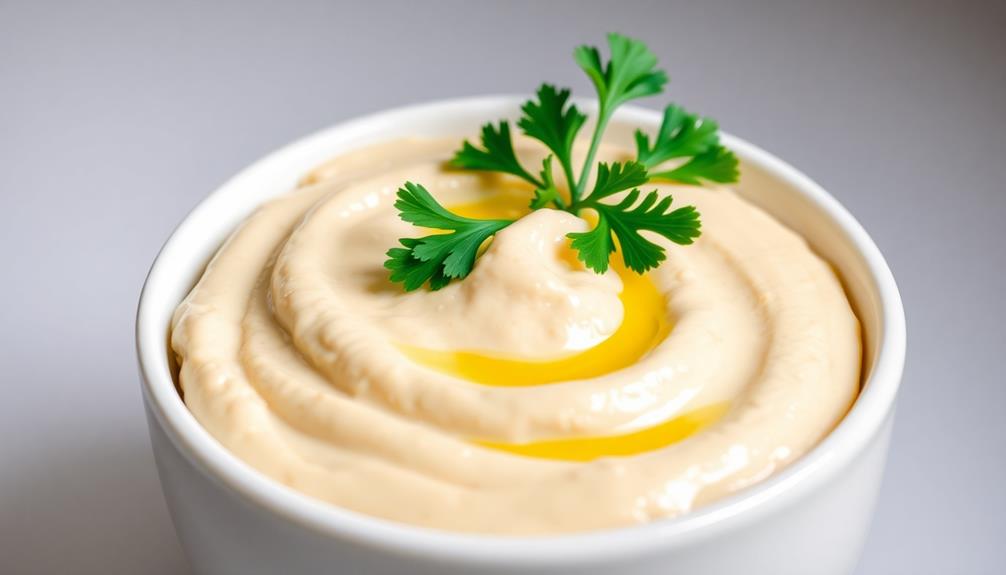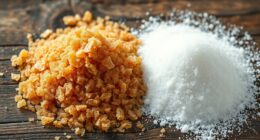Sfiha, the beloved Lebanese "pizza," has an incredible history that'll wow you! Originating in ancient Baalbek, it's evolved over centuries through diverse cultural exchanges. Traditionally made with ground lamb, tomatoes, onions, and Middle Eastern spices, sfiha gained global popularity as Lebanese immigrants shared it worldwide. Today, you can find this savory delight in Lebanese restaurants and bakeries everywhere. The cooking process is simple – knead the dough, roll it out, add the flavorful filling, bake until golden, and serve piping hot. One bite, and you'll understand why sfiha is cherished as a true taste of Lebanese culture. Ready to learn more? If you're interested in exploring more of the rich flavors of Lebanese cuisine, you might also want to try making a Lebanese moghrabieh recipe. This traditional dish features couscous-like pearls of pasta cooked with tender chunks of lamb, chickpeas, and a blend of warm spices. It's a comforting and satisfying meal that showcases the diverse and delicious flavors of Lebanese cooking. Why not expand your culinary horizons and bring a taste of Lebanon into your own kitchen?
Key Takeaways
- Sfiha is a savory Middle Eastern pastry originating from the ancient city of Baalbek, Lebanon, and has evolved through diverse cultural exchanges over centuries.
- Sfiha is traditionally made with ground lamb, tomatoes, onions, and Middle Eastern spices, and is typically baked until the crust is golden brown and the filling is bubbling.
- The preparation of sfiha involves kneading the dough, rolling it into thin, round discs, adding the savory filling, and baking the filled pastries in a preheated oven.
- Sfiha has gained global popularity as Lebanese immigrants have introduced it to restaurants and bakeries worldwide, making it a celebrated part of Lebanese culinary heritage.
- Sfiha is a versatile dish that can be enjoyed as a snack or a main course, and is often served with additional toppings or dipping sauces for a complete and flavorful dining experience.
History
Sfiha, the Lebanese pizza, has a rich history that dates back centuries. This savory flatbread originated in the ancient city of Baalbek, nestled in the mountains of Lebanon.
Over time, the recipe and preparation evolved, influenced by the region's diverse cultural exchanges.
Traditionally, sfiha was made with ground lamb, tomatoes, onions, and a blend of Middle Eastern spices, all baked to perfection on a flat metal pan. The distinct flavors and aromas captivated locals and travelers alike, solidifying sfiha's place as a beloved Lebanese delicacy.
As Lebanese immigrants spread across the globe, they brought their beloved sfiha with them, introducing this delectable treat to new audiences.
Today, sfiha can be found in Lebanese restaurants and bakeries worldwide, allowing people from all walks of life to experience the taste of this time-honored culinary tradition.
Cooking Steps
To prepare the perfect sfiha, you'll first need to preheat your oven to a toasty 450°F (230°C).
Once it's hot and ready, grab your rolling pin and roll out the dough into thin, round discs. Be gentle – you don't want to overwork it!
Next, top each disc with a savory mixture of ground lamb, onions, tomatoes, and aromatic spices. Fold the dough over the filling to create a crescent shape, then crimp the edges to seal in all that delicious flavor.
Arrange the stuffed sfiha on a baking sheet and pop them into the oven. Bake until the crust is golden brown and the filling is bubbling, about 15-20 minutes.
Keep an eye on them – you want them to be perfectly baked, but not burnt!
Once they're done, let them cool for a few minutes before serving. Enjoy the flaky crust and the irresistible blend of spices in every bite. Mmm, it's a Lebanese delight!
Step 1. Knead the Dough Until Smooth
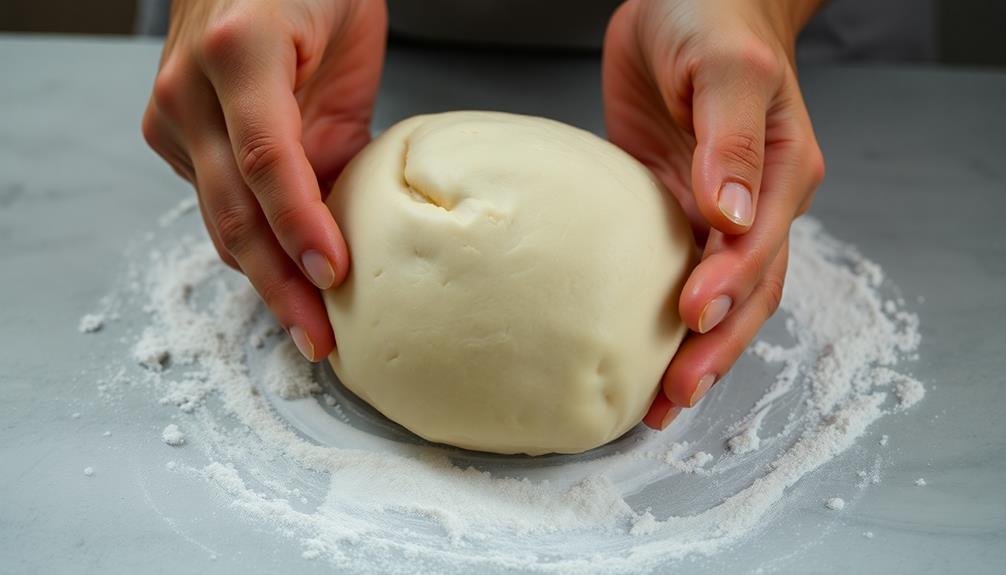
Kneading the dough with purpose and patience is the key to unlocking its potential. Start by placing the dough on a lightly floured surface.
Using the heel of your hand, push the dough away from you, then fold it back towards you. Repeat this motion, rotating the dough as you go. Knead for about 5-7 minutes, until the dough becomes smooth and elastic.
Don't be afraid to add a sprinkle of flour if the dough starts to stick. The kneading process develops the gluten, which gives the dough its structure and chewiness.
Once the dough is nice and smooth, form it into a ball and let it rest for 10-15 minutes. This resting period allows the gluten to relax, making the dough easier to roll out later.
Step 2. Roll Out the Dough

After allowing the dough to rest, it's time to roll it out. Grab your rolling pin and dust your work surface with a bit of flour.
Gently place the dough on the surface and start rolling it out, using even strokes. As you roll, the dough will gradually transform from a ball into a thin, round shape.
Don't worry if it's not perfect – sfiha is meant to have a rustic, homemade look.
Once the dough is rolled out, use a sharp knife or a pizza cutter to cut it into individual pieces. The traditional shape for sfiha is a half-moon, but you can get creative and cut them into squares or triangles if you prefer.
Be sure to leave a little space between each piece, as they'll need room to bake.
Now that your dough is ready, it's time to add the toppings and bake your delicious Lebanese pizza.
Get ready for the mouthwatering aromas to fill your kitchen!
Step 3. Add Filling Ingredients

Gather your choice of filling ingredients next. You'll need to decide what you want to put on your sfiha! Popular options include ground lamb, ground beef, or a combination of the two.
Sauté the meat in a skillet with some olive oil, onions, and a blend of Middle Eastern spices like cinnamon, allspice, and black pepper. Cook until the meat is browned and the onions are soft.
Next, add some diced tomatoes, parsley, and a pinch of salt and pepper. Stir everything together until it's nice and flavorful. You can also add some pine nuts or raisins for extra texture and sweetness.
For a vegetarian version, try using sautéed mushrooms, spinach, or roasted veggies instead of the meat.
Once your filling is ready, you can start assembling the sfiha. Scoop a generous amount onto the center of each flattened dough circle, leaving a bit of space around the edges.
Fold the dough over the filling to create a half-moon shape, then crimp the edges to seal it in.
Step 4. Bake in Preheated Oven
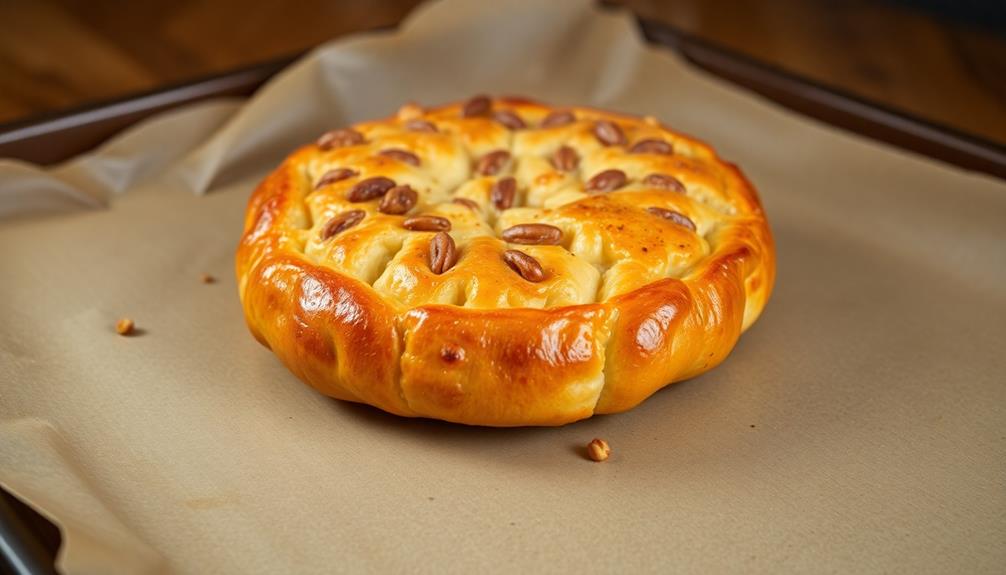
Preheat your oven to 450°F (230°C). This high heat is crucial for achieving the perfect sfiha crust – crispy on the outside and deliciously soft on the inside.
While your oven warms up, grab a baking sheet and line it with parchment paper. This will prevent the sfiha from sticking and make for easy cleanup later.
Once your oven is ready, carefully transfer the filled sfiha dough onto the prepared baking sheet. Make sure to space them out evenly, giving each one enough room to bake.
Pop the tray into the preheated oven and let the magic happen. Bake the sfiha for 12 to 15 minutes, keeping a close eye on them. You'll know they're done when the edges turn golden brown and the filling is bubbly.
Remove the tray from the oven, and let the sfiha cool for a few minutes before serving. This brief resting period allows the flavors to meld and the crust to set.
Now, you're ready to savor the authentic taste of Lebanese pizza!
Step 5. Serve Immediately After Baking
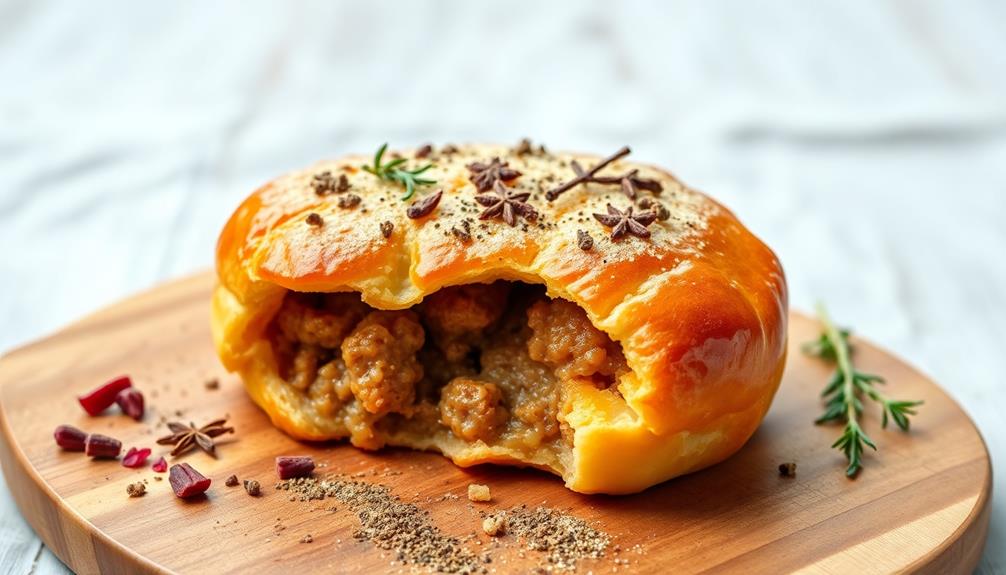
The aroma of freshly baked sfiha calls you to indulge without delay. As the savory toppings and buttery crust emerge from the oven, it's time to serve this delectable Lebanese pizza immediately.
Don't let the temptation wait – the golden-brown crust and melted cheese are at their peak when freshly baked.
Carefully transfer the sfiha from the baking sheet to a serving platter or plates. The warm, fragrant pockets of dough are best enjoyed straight away, while the flavors are vibrant and the texture is perfect.
Invite your family or guests to dive in and savor each bite, as the combination of spiced ground meat, tangy tomatoes, and fresh herbs creates a symphony of tastes in your mouth.
Serve the sfiha warm, with any additional toppings or dipping sauces on the side, allowing everyone to customize their slices to their liking.
Pair it with a refreshing salad or a glass of cool, crisp wine for a complete and satisfying meal.
Final Thoughts
Having savored the tantalizing flavors of sfiha, Lebanese pizza, one can't help but marvel at the versatility and appeal of this beloved dish. From the aromatic spices to the perfectly crisp crust, every bite is a delightful journey through the rich culinary traditions of Lebanon.
What makes sfiha so special is its ability to be enjoyed in so many ways. Whether served as a quick snack or a centerpiece of a lavish feast, this versatile dish can be customized to suit any occasion or taste preference.
The opportunities for experimentation are endless – try adding your favorite toppings or serving it alongside a refreshing salad or creamy hummus for a truly satisfying meal.
As you savor the final piece, remember that the true joy of sfiha lies not only in its flavors but in the sense of community and tradition it represents. Sharing this beloved dish with family and friends is a cherished experience that transcends cultures and creates lasting memories.
Frequently Asked Questions
What Is the Difference Between Sfiha and Traditional Pizza?
You're probably familiar with traditional pizza, but did you know there's a delicious alternative called sfiha?
While pizza has a round crust and toppings like tomato sauce and cheese, sfiha has a flatbread base and unique fillings like ground meat, pine nuts, and spices.
The flavors in sfiha are more Middle Eastern, making it a tasty twist on the classic pizza you love.
Get ready to try something new and exciting!
How Do I Store Leftover Sfiha?
To store your leftover sfiha, you'll want to wrap it up nice and tight.
Pop the pieces in an airtight container or plastic bag, and stick 'em in the fridge. They'll stay fresh for 3-4 days.
When you're ready to enjoy them again, just reheat the sfiha in the oven for a few minutes until it's nice and warm.
Easy peasy! Your tasty leftovers will be as good as new.
Can I Use Store-Bought Pita Bread for Sfiha?
Sure, you can definitely use store-bought pita bread for your sfiha!
It's a super easy way to make this delicious Lebanese pizza. The pita will give you that perfect, fluffy base to top with all your favorite ingredients.
Just be sure to toast the pita a bit before adding your toppings so it gets nice and crispy.
With store-bought pita, you can whip up sfiha in no time – perfect for a quick and tasty meal or snack.
Enjoy!
Is Sfiha Suitable for Vegetarians or Vegans?
Yes, sfiha can absolutely be enjoyed by vegetarians and vegans!
The traditional sfiha recipe is quite flexible, making it easy to swap out any meat-based ingredients for plant-based alternatives. You can create a delicious veggie-packed sfiha with things like roasted vegetables, chickpeas, or lentils.
And for a vegan option, simply leave out the cheese or use a dairy-free cheese instead.
With a few simple tweaks, sfiha can be a satisfying and flavorful meatless meal that everyone can enjoy.
How Can I Customize the Toppings for Sfiha?
When customizing your sfiha toppings, the possibilities are endless! You can start with a classic cheese or meat base, then add your favorite veggies like tomatoes, onions, or peppers.
For a spicy twist, try adding some chili peppers or hot sauce.
Vegetarians can swap the meat for plant-based protein like mushrooms or lentils.
Get creative and experiment with different flavor combinations – the key is to choose toppings you truly enjoy!
